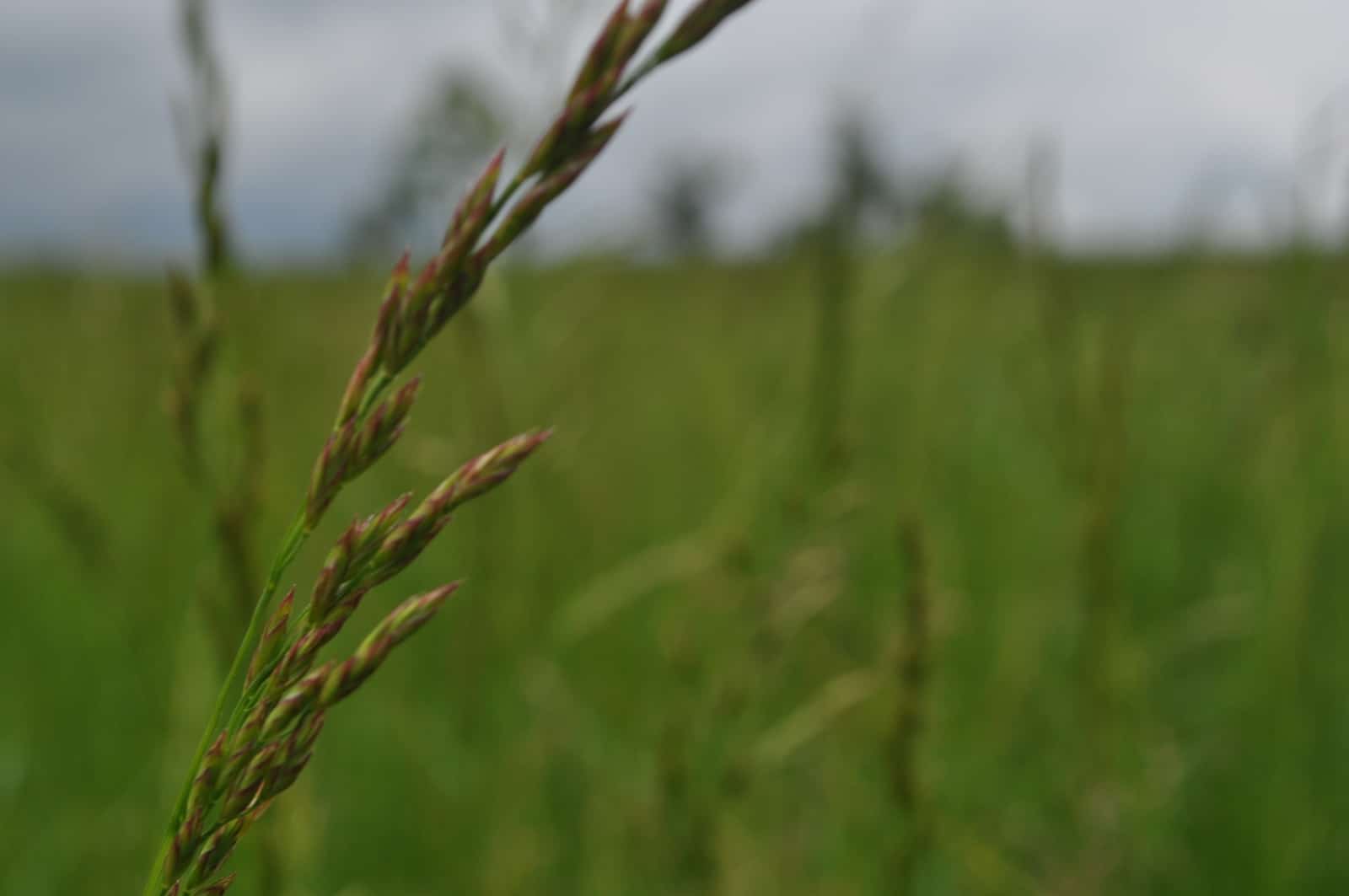Know Your Pasture Grass
- Topics: Article, Hay, Pasture & Forage Management, Pasture and Forages

Grass is grass, right? Only if a horse is a horse, of course. Just like horses, all grasses are not created equal. Each grass species is slightly different from all others. Saying tall fescue and bluegrass are the same is like saying Quarter Horses and Thoroughbreds are the same. Knowing what’s in your pastures and knowing what you’re planting is key to successful pasture management. In this article we will talk about determining the kinds of grasses you have, variety selection, establishing new grasses, and grazing tolerance.
What Grasses Do I Have?
To begin improved pasture management, know what you have to work with. Take a walk through your pasture and determine what grasses you have. Some of the most common grasses in horse pastures include:
- Kentucky bluegrass, a cool-season grass (grows in the spring and fall) that has a dark, fine blade with a tip shaped like the front of a boat. Bluegrass forms a tight sod and grows close to the ground. It survives well even under close grazing, which is why it is a perfect grass for horse pastures in temperate regions of the United States.
- Orchardgrass, a cool-season grass. It has a bluish/green color, is soft to the touch, and is flat at the base of each grass blade. Orchardgrass is palatable to horses and will provide higher yields than Kentucky bluegrass. However, it grows in bunches and will not persist when grazed or clipped close to the ground on a regular basis. Never graze or clip orchargrass shorter than 3-4 inches, and provide rest periods between grazing events.
- Tall fescue, another cool-season grass. It has a dark green color and prominent veins on the leaves. Tall fescue will feel rough to the touch, as the edges of the leaf blades are serrated like a knife. This grass is also a bunch-growing grass, but is much tougher than orchardgrass and can tolerate frequent grazing. Naturally occurring tall fescue is likely infected with a fungal endophyte that can be toxic to broodmares. Avoid grazing late-term broodmares on this grass.
- White clover, which is actually a legume, not a grass. It’s an excellent forage for horses, grows close to the ground, and can tolerate close, frequent grazing, especially when conditions are cool and wet.
- Bermudagrass, a warm-season grass that grows best in the South. It is a wiry grass that forms a tight sod and is highly productive when fertilized adequately. Bermudagrass also makes great hay for horses.
- Nimblewill, a low-growing native warm-season grass seen in horse pastures in Kentucky and surrounding states; however, horses will not eat it (nor will cattle or goats). Thus, pasture managers usually consider it a weed. There are no herbicides labeled for pastures that will control nimblewill without also harming other grasses. Maintaining a good grass cover and not grazing close is the best way to prevent nimblewill from overtaking your pastures.
This list covers some of the most common horse pasture grasses, but there are many more species. For more information about identifying pasture grasses, read the Forage Identification and Use Guide (AGR-175) at uky.edu/Ag/Forage/ForagePublications.htm, or check with your local county extension agent
Create a free account with TheHorse.com to view this content.
TheHorse.com is home to thousands of free articles about horse health care. In order to access some of our exclusive free content, you must be signed into TheHorse.com.
Start your free account today!
Already have an account?
and continue reading.
Written by:
University of Kentucky College of Agriculture, Food, and Environment
Related Articles
Stay on top of the most recent Horse Health news with












